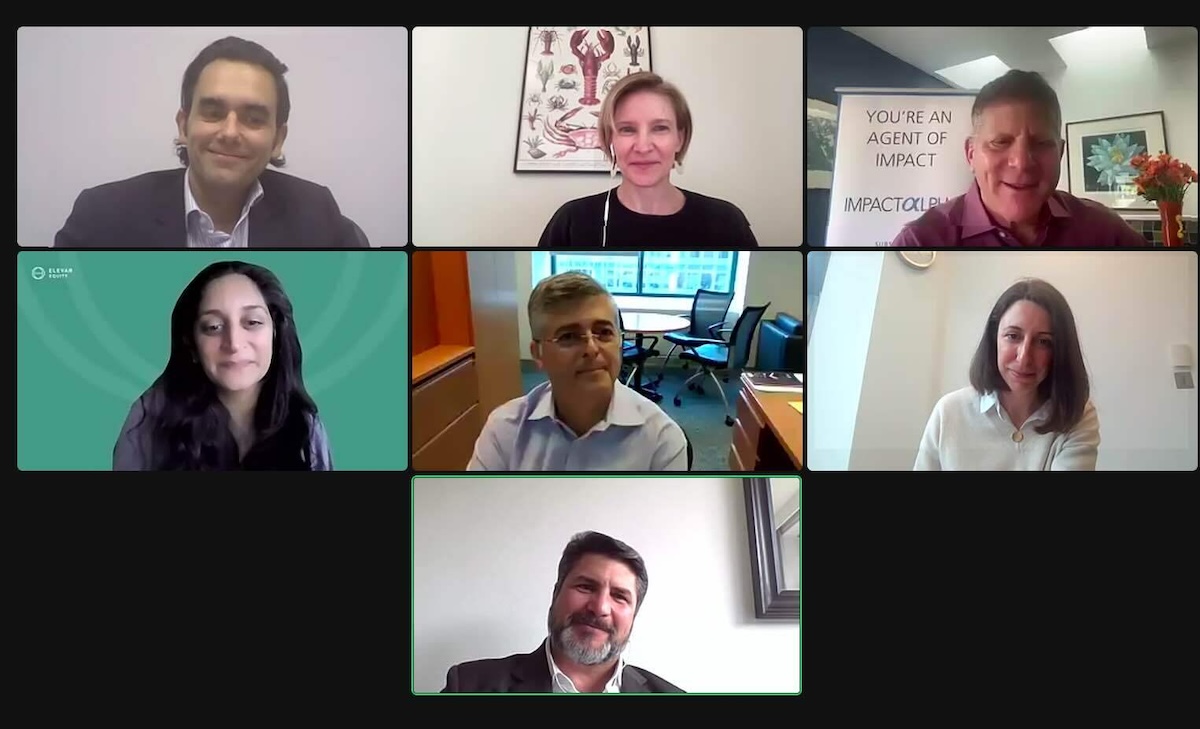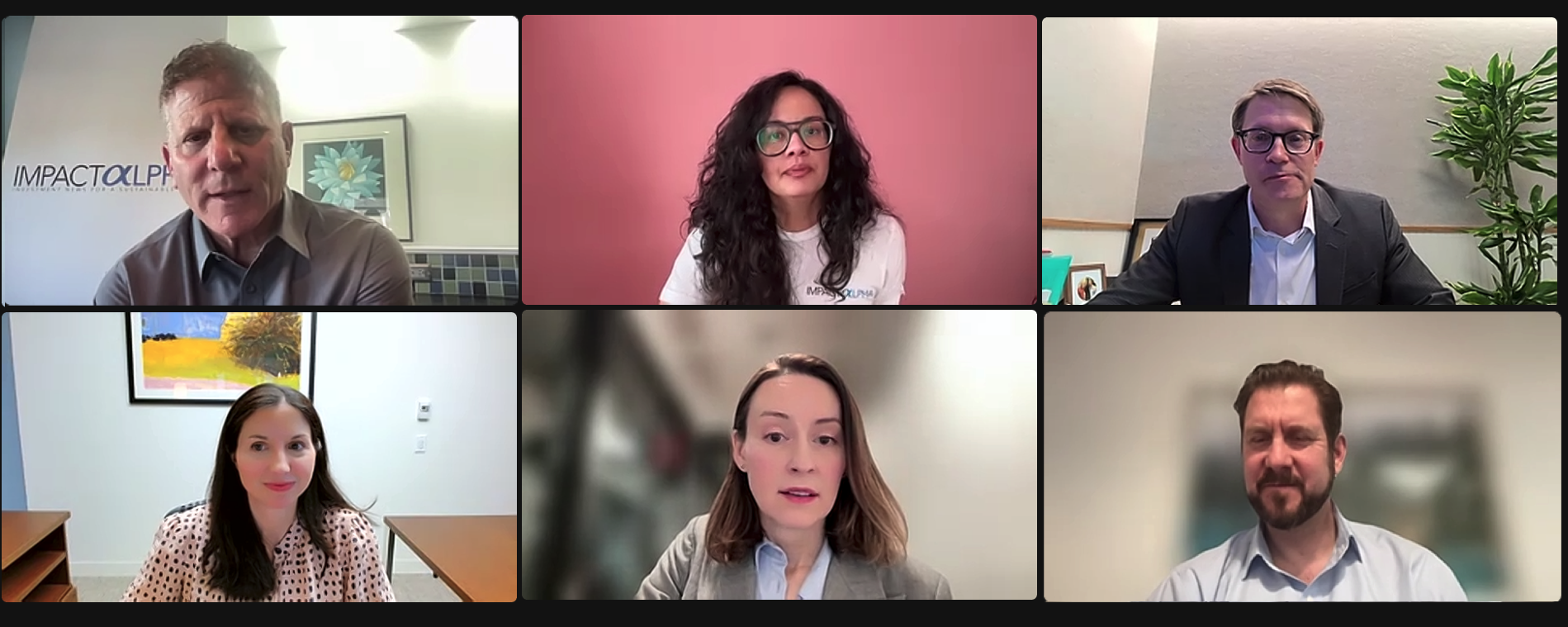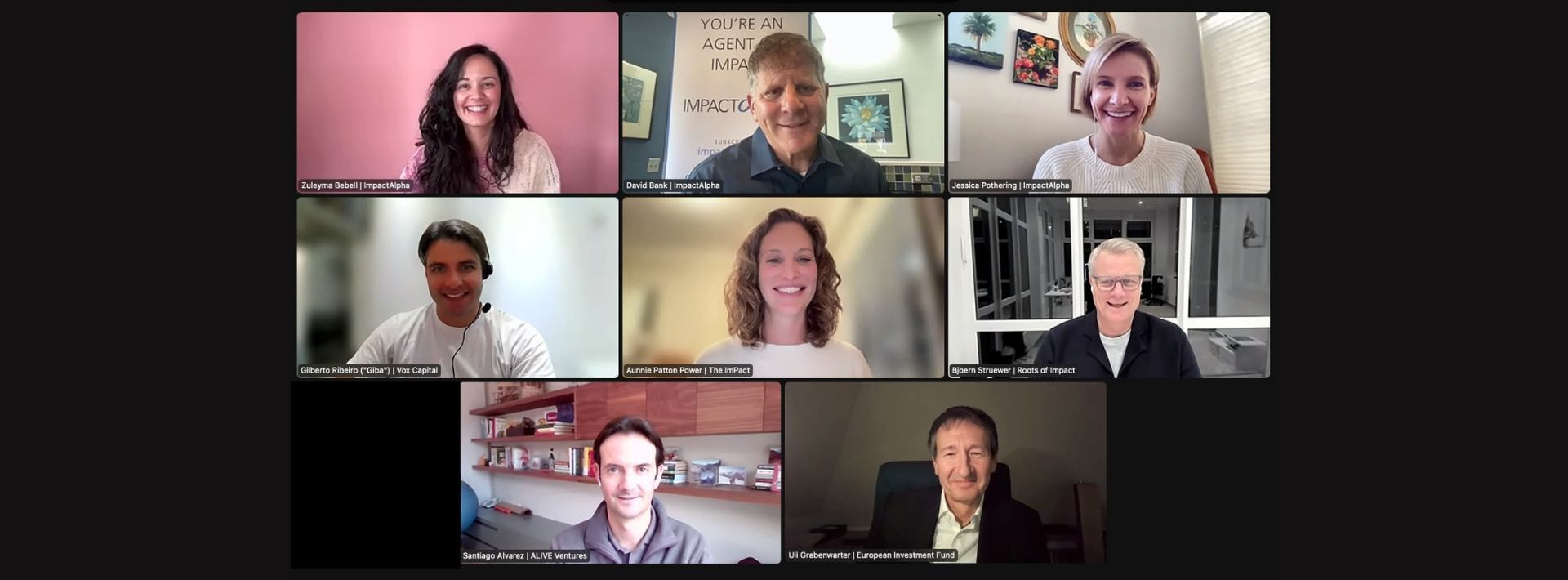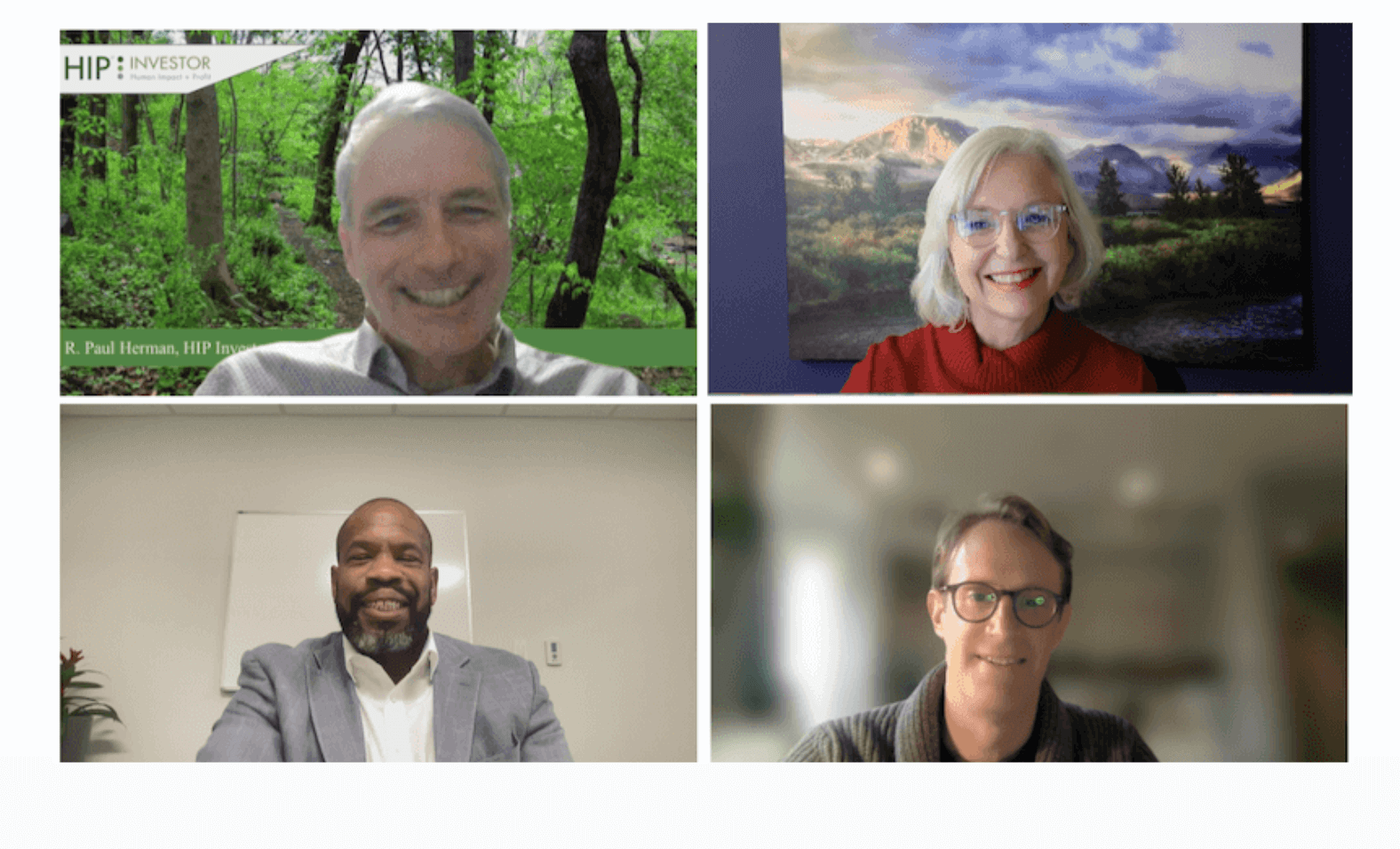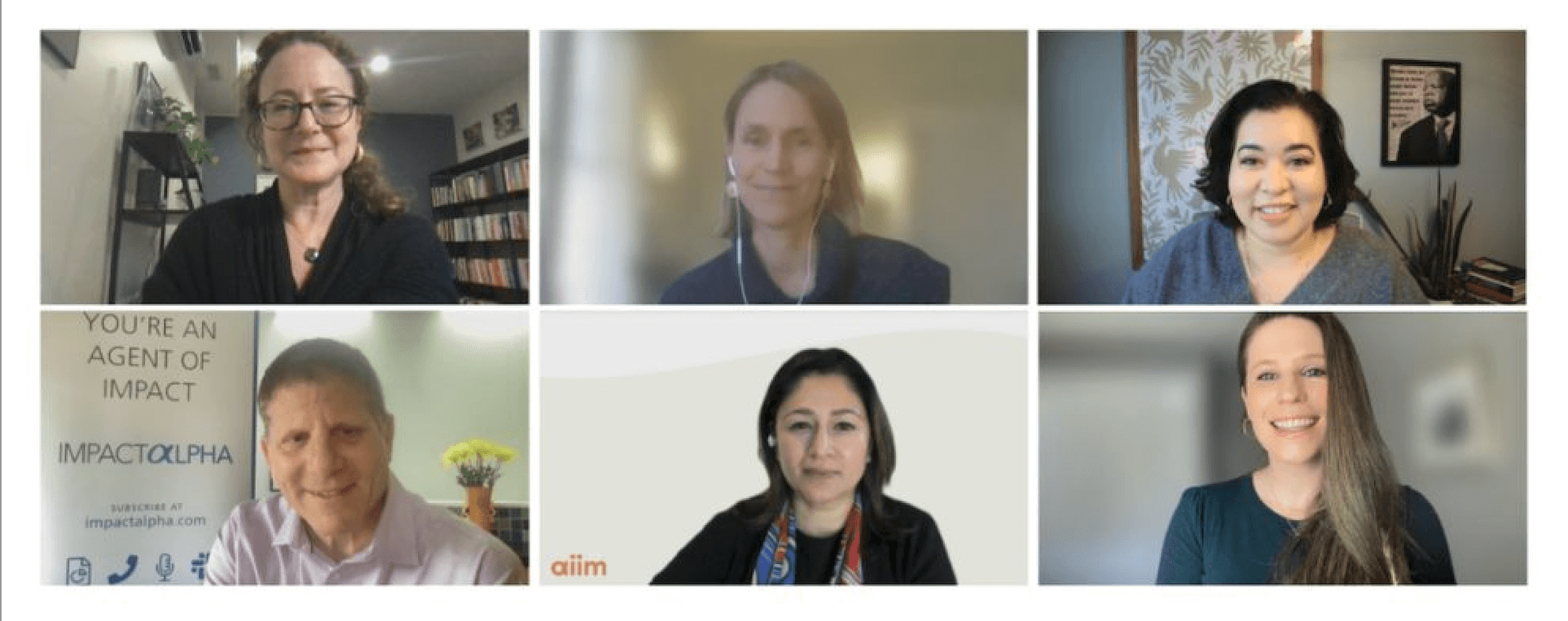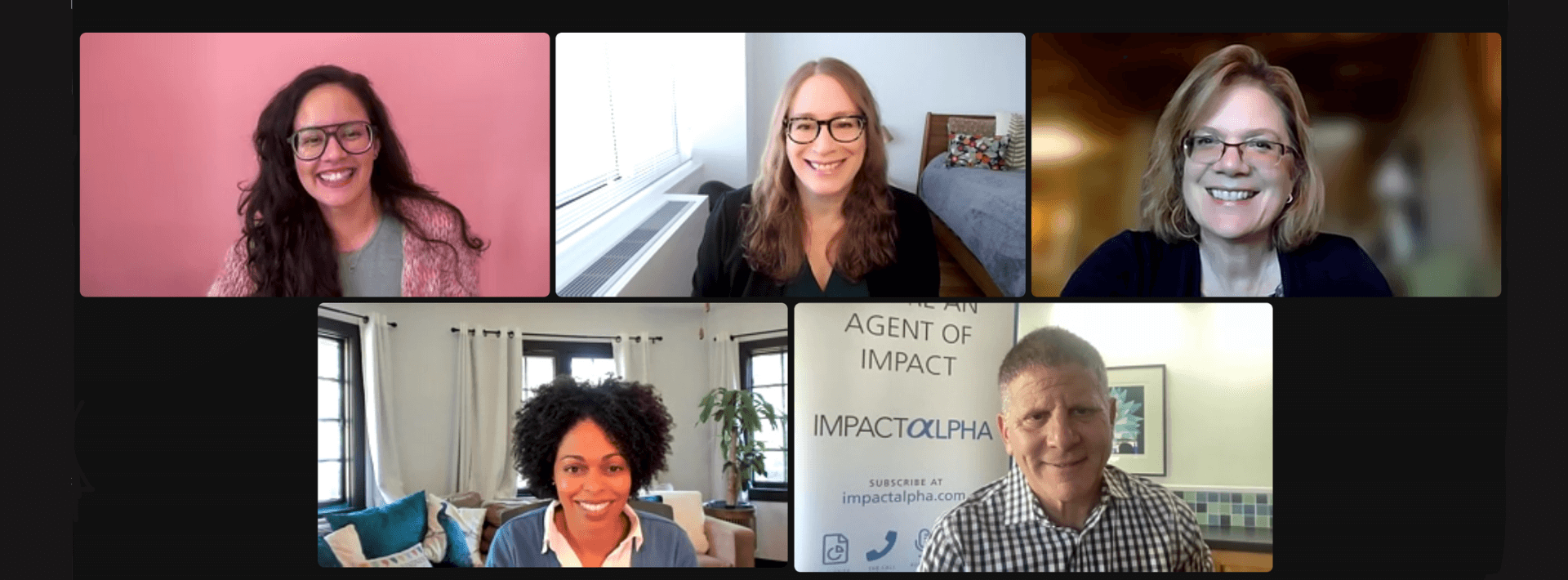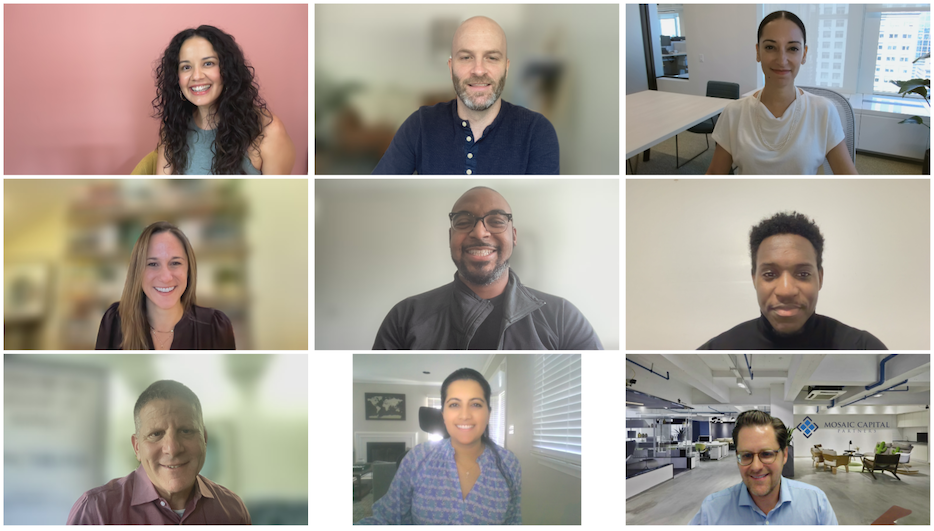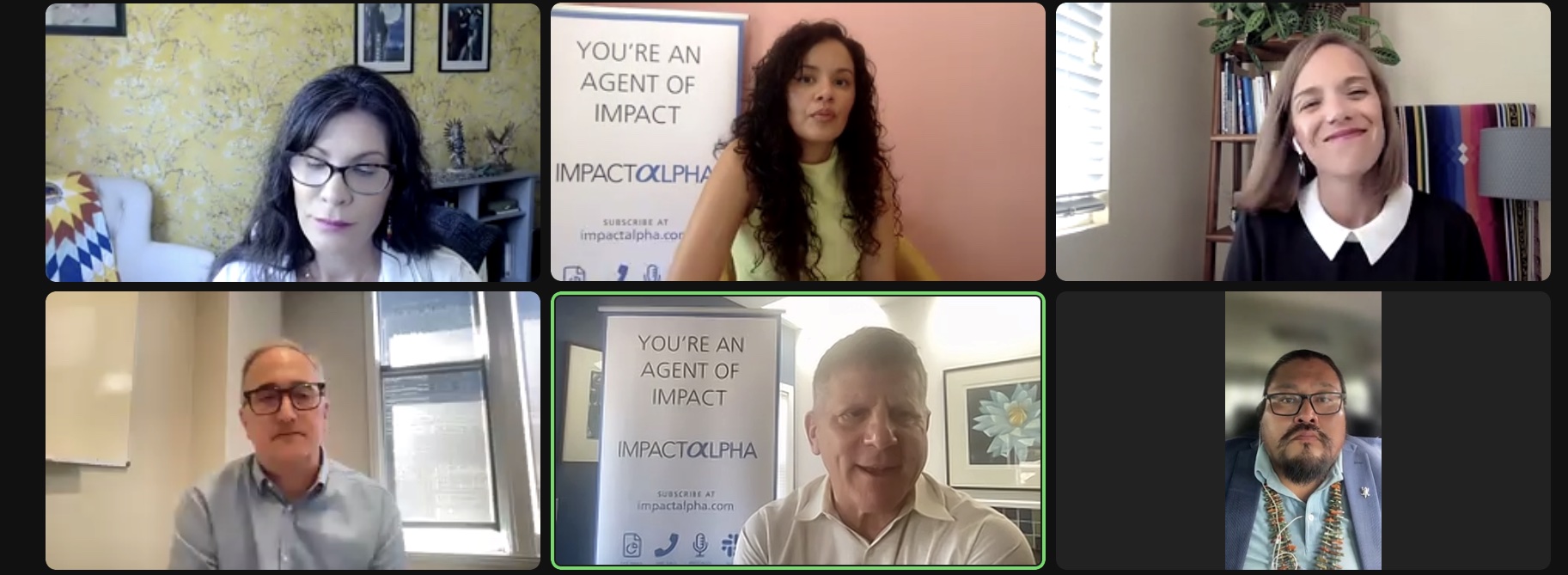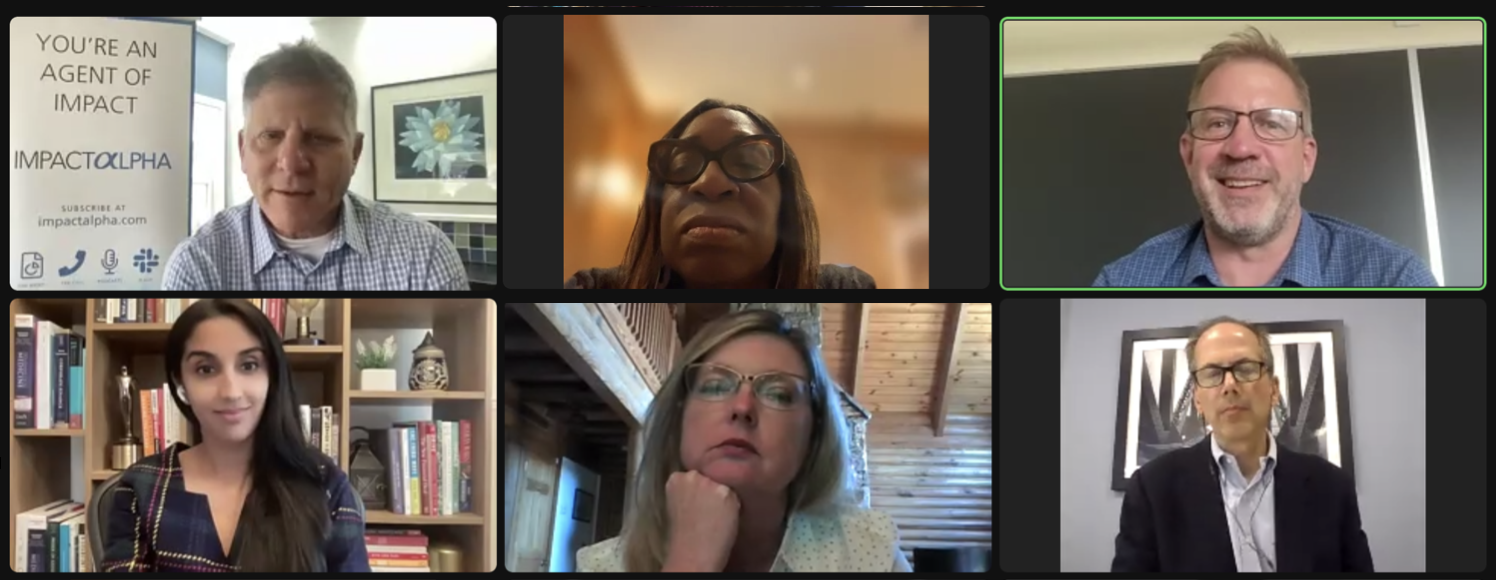Among the misperceptions that have kept capital from flowing to broad sectors of emerging markets: Risks are too high. Customers are too poor. Businesses are too small. There aren’t enough investable deals. Underwriting is too expensive.
Such myths are being busted with the availability of more robust market, business and customer information, Martina Castro of British International Investment said on this week’s Agents of Impact Call.
“There are a wealth of well-established, mature companies out there that require larger ticket sizes and that are having equally important impact for their populations,” she said.
The “Inclusive Business Investing Guide,” launched ahead of this week’s Call, aims to debunk misperceptions about investing in low- and middle-income emerging market households and provide practical guidance to investors looking to deepen their social inclusion lens.
The research process was transformative to BII’s own investment strategy reevaluation a few years ago. The development finance institution found that even without intentional targets, its portfolio included a number of businesses serving lower- and middle-income households.
“We [realized] we can have that type of impact without compromising our risk and return hurdle,” said Castro.
Commercial scale
In India, Varthana provides loans to low-cost private schools to build infrastructure and increase capacity to improve the quality of education for underserved students. In Brazil, Águas de Manaus is a private water and sanitation provider serving residents in a remote part of the Brazilian Amazon. In Africa, Sun King delivers pay-as-you-go solar products and appliances to off-grid rural and low-income households.
All have raised tens if not hundreds of millions of dollars in private investment capital from impact investors, development finance institutions and commercial investors alike.
“The market is maturing, and we see more interest from investors,” said Citi Social Finance’s Borja Garcia Fernandez.
Citi Social Finance transacted just $100 million for microfinance institutions 20 years ago. Last year it notched $3 billion in deals across a range of social sectors in 45 markets.
“There is a lot of work to be done with more generic investors that are [just] starting their sustainability journeys,” said Garcia Fernandez.
What’s in a name?
“You cannot see people only as they spend today,” advised Wagner Albuquerque de Almeida of the International Finance Corp.
And don’t call such customers “poor people” or “low income,” argued Amie Patel of Elevar Equity. They may be lower in economic status, but are the largest segment across the globe.
Elevar and its sister company Enmasse use the term EPIC, for “entrepreneurial households” that live and work within “industrious communities.” Such households have tenacity, resilience, aspiration, ambition” but lack the exposure and infrastructure of more developed regions, said Patel.
“Let’s reframe this with more positive, more opportunistic, long-term thinking and see this segment of the market as the future,” she said. “If we can all start to believe and understand that EPIC is a huge opportunity set, that’s when we can start getting the paradigms to shift.”
Metrics matter
“It sounds very simple, but once you start putting all of these terminologies and different contexts on the table, you realize that you have to do the work to define how they interact with your strategy,” observed Juan Jose Dada from Dutch development bank FMO, one of the guide’s partners.
FMO designed its own social investment taxonomy that includes pre-screening data proxies that it uses to make sure it actually reach the customers it intends. Citi Social Finance has also designed it own social investment framework that guides the institution to investments in basic services and infrastructure for lower- and middle-income populations. The International Finance Corp. looks for opportunities to shift people, whether they’re women in agriculture or displaced communities, from the informal to the formal economy.
Observed Patel, “People are finally realizing that in addition to solving the planet’s problems, we need to solve the social side, and that people do need better resources.”

